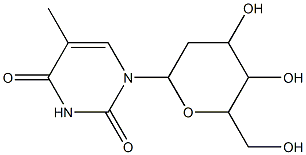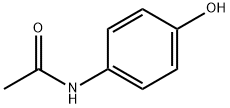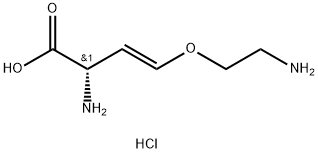2,2-Bis(3-amino-4-hydroxyphenyl)propane
- CAS NO.:1220-78-6
- Empirical Formula: C15H18N2O2
- Molecular Weight: 258.32
- MDL number: MFCD00437413
- EINECS: 807-962-8
- SAFETY DATA SHEET (SDS)
- Update Date: 2024-05-23 11:46:28

What is 2,2-Bis(3-amino-4-hydroxyphenyl)propane?
Description
2,2-Bis(3-amino-4-hydroxyphenyl)propane (BAP) is a diamine organic compound that is used in the synthesis of polyimides.
The Uses of 2,2-Bis(3-amino-4-hydroxyphenyl)propane
2,2-bis(4-hydroxy-3-aminophenyl)propane is used as a polyimide intermediate and functional monomer.
Synthesis

Thedinitro compound (2) (10,000 g, 0.0314 mol) was heated to reflux inabsolute ethanol (100 mL) in the presence of wet 10% Pd/C catalyst(0.650 g). Hydrazine monohydrate (20 mL) was then added dropwiseover a period of 30 min, and the reaction was maintained at reflux for24 h. The hot solution was filtered through Celite to eliminate thecatalyst and partially concentrated under reduced pressure. Afterwards,the concentrate was poured into cold distilled water. The crude productwas filtered, washed with water, dried under vacuum and recrystallizedtwice from methanol to give (3). The diamino compound was obtainedas a white powder: yield: 88%; mp. 263 ??C (DSC); Analysis: Calculatedfor C15H18N2O2: C, 69.74%; H, 7.02%; N, 10.84%. Found: C, 69.35%;H, 7.15%; N, 11.02%. 1H NMR (400 MHz, DMSO-d6): |? (ppm); 8.57 (s,1H, OH), 6.43 (d, J=8.1 Hz, 1H, Har), 6.34 (d, J=1.8 Hz, 1H, Har),6.21 (dd, J=8.1 Hz, 1.8 Hz, 1H, Har), 4.23 (s, 2H, NH) 1.37 (s, 3H, CH3f). 13C NMR (100 MHz, DMSO-d6): |? (ppm) 142.4, 141.4, 135.4, 114.4,113.5, 113.4, 40.8, 30.9.
Properties of 2,2-Bis(3-amino-4-hydroxyphenyl)propane
| Melting point: | 248-250 °C |
| Boiling point: | 471.1±45.0 °C(Predicted) |
| Density | 1.265±0.06 g/cm3(Predicted) |
| storage temp. | Keep in dark place,Inert atmosphere,Room temperature |
| solubility | soluble in Dimethylformamide |
| form | powder to crystal |
| pka | 10.62±0.10(Predicted) |
| color | White to Yellow to Orange |
| CAS DataBase Reference | 1220-78-6(CAS DataBase Reference) |
Safety information for 2,2-Bis(3-amino-4-hydroxyphenyl)propane
| Signal word | Warning |
| Pictogram(s) |
 Exclamation Mark Irritant GHS07 |
| GHS Hazard Statements |
H315:Skin corrosion/irritation H319:Serious eye damage/eye irritation |
| Precautionary Statement Codes |
P264:Wash hands thoroughly after handling. P264:Wash skin thouroughly after handling. P280:Wear protective gloves/protective clothing/eye protection/face protection. |
Computed Descriptors for 2,2-Bis(3-amino-4-hydroxyphenyl)propane
New Products
Tert-butyl bis(2-chloroethyl)carbamate (S)-3-Aminobutanenitrile hydrochloride N-Boc-D-alaninol N-BOC-D/L-ALANINOL N-octanoyl benzotriazole 3,4-Dibenzyloxybenzaldehyde 4-Hydrazinobenzoic acid 1,1’-CARBONYLDIIMIDAZOLE R-2-BENZYLOXY PROPIONIC ACID 4-HYDROXY BENZYL ALCOHOL 1,1’-CARBONYLDI (1,2-4 TRIAZOLE) 3-NITRO-2-METHYL ANILINE (2-Hydroxyphenyl)acetonitrile 4-Bromopyrazole 5-BROMO-2CYANO PYRIDINE 5,6-Dimethoxyindanone 5-broMo-2-chloro-N-cyclopentylpyriMidin-4-aMine 2-(Cyanocyclohexyl)acetic acid 4-methoxy-3,5-dinitropyridine 2-aminopropyl benzoate hydrochloride 1-(4-(aminomethyl)benzyl)urea hydrochloride tert-butyl 4- (ureidomethyl)benzylcarbamate diethyl 2-(2-((tertbutoxycarbonyl)amino) ethyl)malonate Ethyl-2-chloro((4-methoxyphenyl)hydrazono)acetateRelated products of tetrahydrofuran








You may like
-
 2,2-Bis(3-amino-4-hydroxylphenyl)propane CAS 1220-78-6View Details
2,2-Bis(3-amino-4-hydroxylphenyl)propane CAS 1220-78-6View Details
1220-78-6 -
 55441-95-7 99%View Details
55441-95-7 99%View Details
55441-95-7 -
 N-Vinylformamide 99%View Details
N-Vinylformamide 99%View Details
13162-05-5 -
 Chloro Uracil 1820-81-1 99%View Details
Chloro Uracil 1820-81-1 99%View Details
1820-81-1 -
 207557-35-5 99%View Details
207557-35-5 99%View Details
207557-35-5 -
 2-ethyl-6-methyl-3-hydroxypyridine succinate 99%View Details
2-ethyl-6-methyl-3-hydroxypyridine succinate 99%View Details
127464-43-1 -
 2-ETHYLPYRIDINE 100-71-0 99%View Details
2-ETHYLPYRIDINE 100-71-0 99%View Details
100-71-0 -
 181228-33-1 (S)-Methyl 3-amino-2-((tert-butoxycarbonyl)amino)propanote Hydrochloride (DAP-OMe. HCl) 99%View Details
181228-33-1 (S)-Methyl 3-amino-2-((tert-butoxycarbonyl)amino)propanote Hydrochloride (DAP-OMe. HCl) 99%View Details
181228-33-1